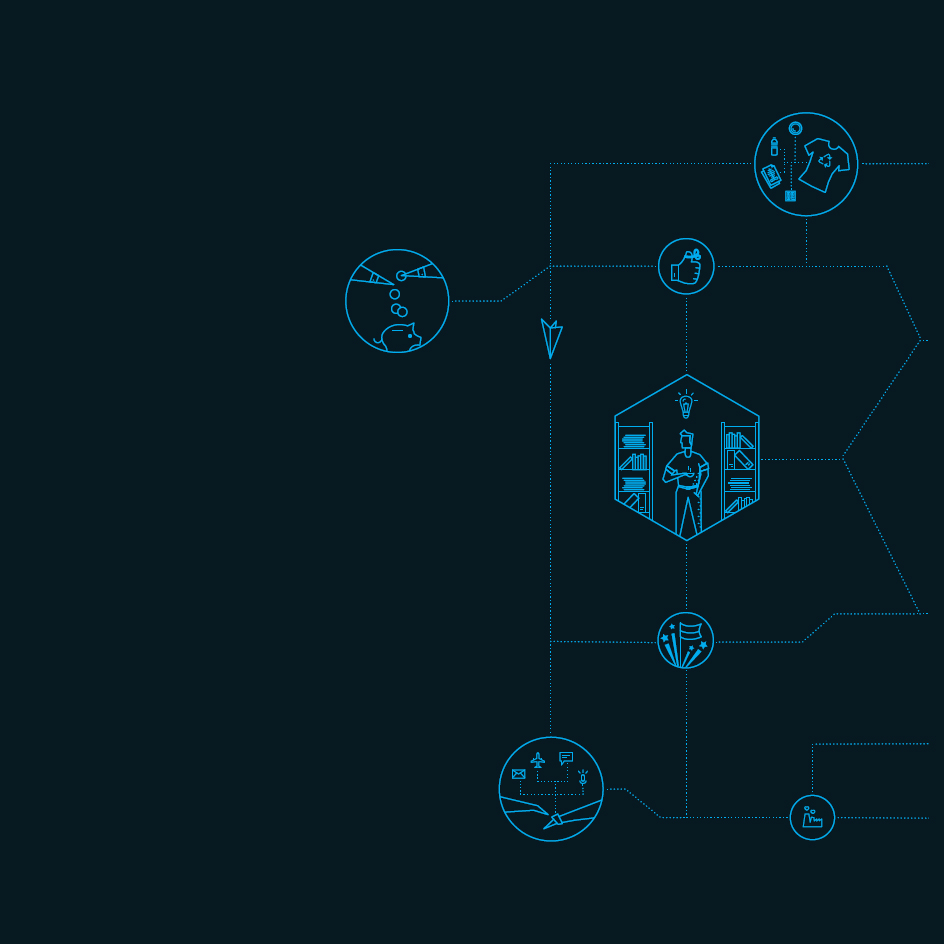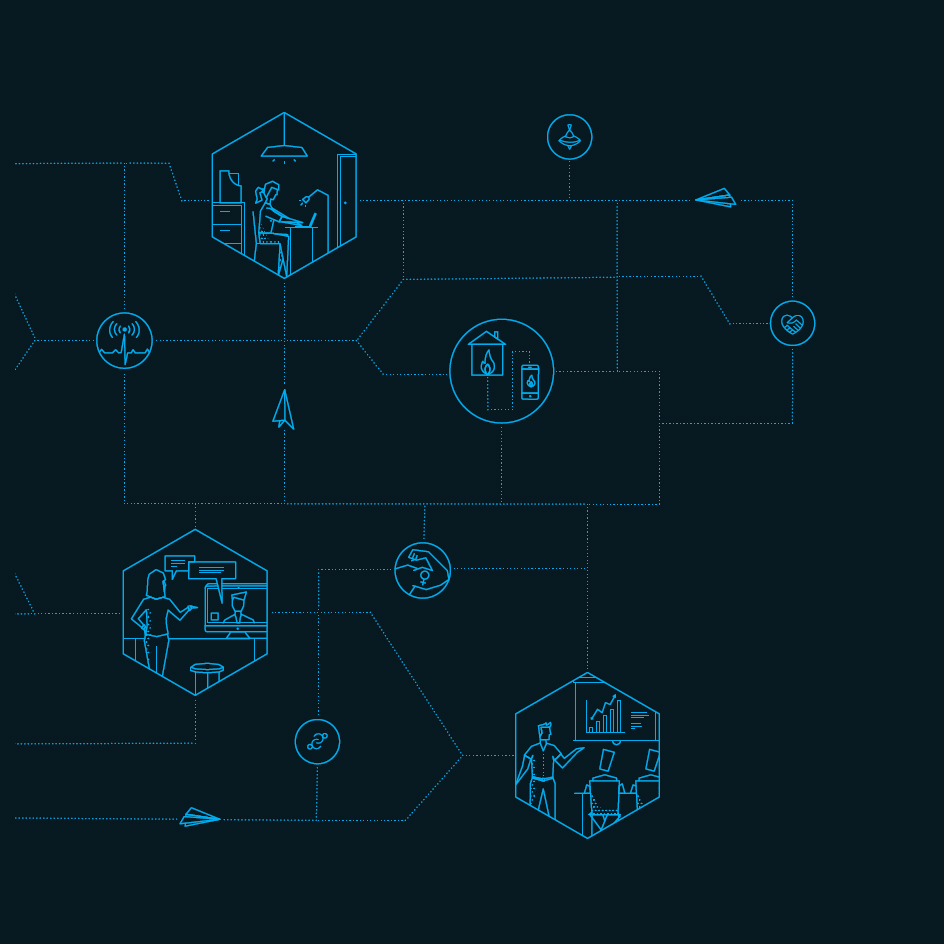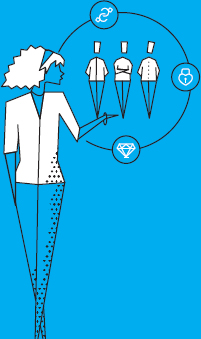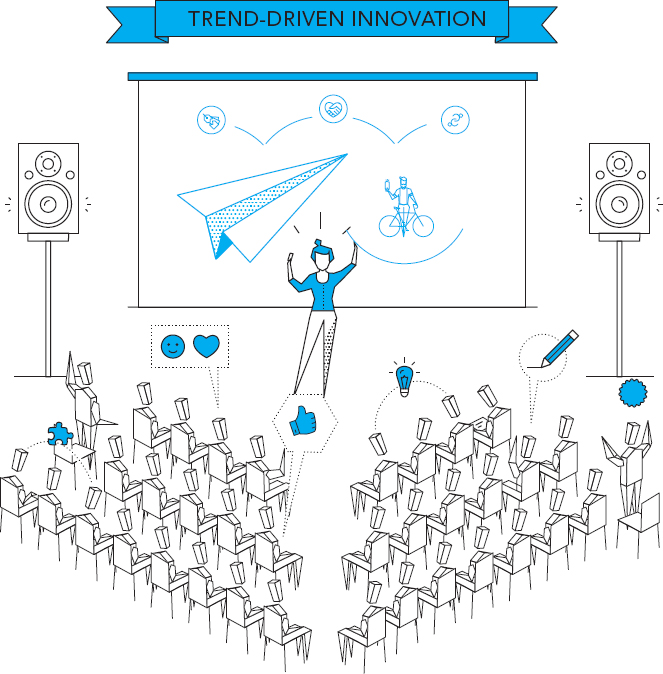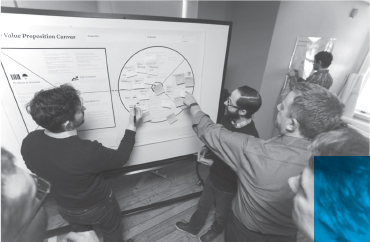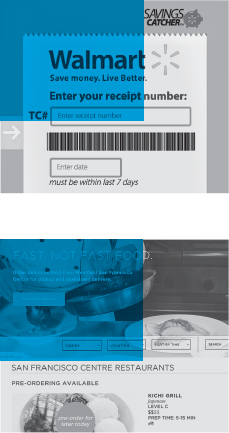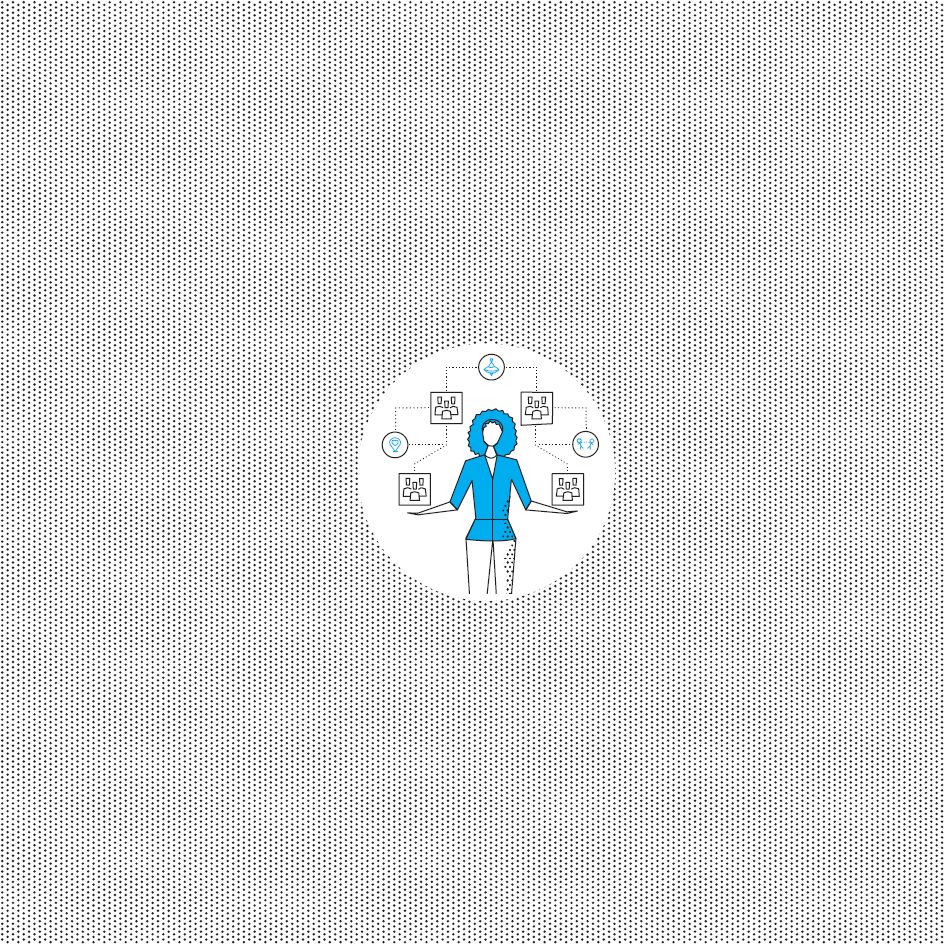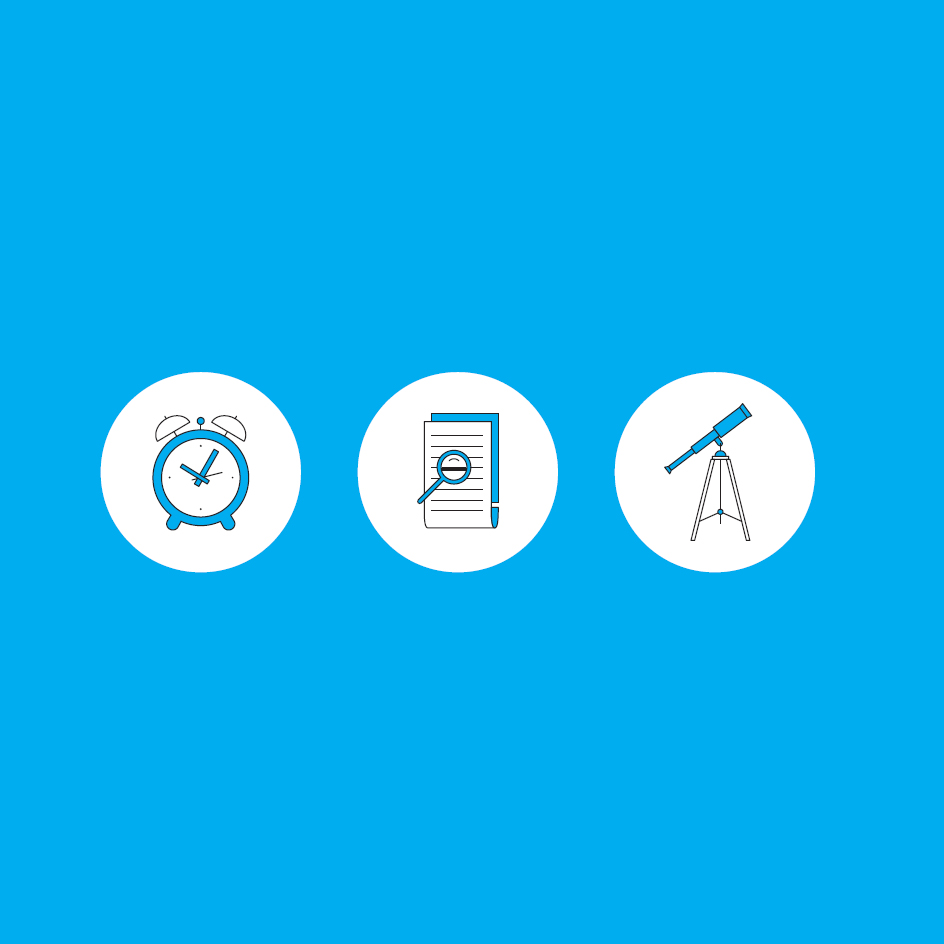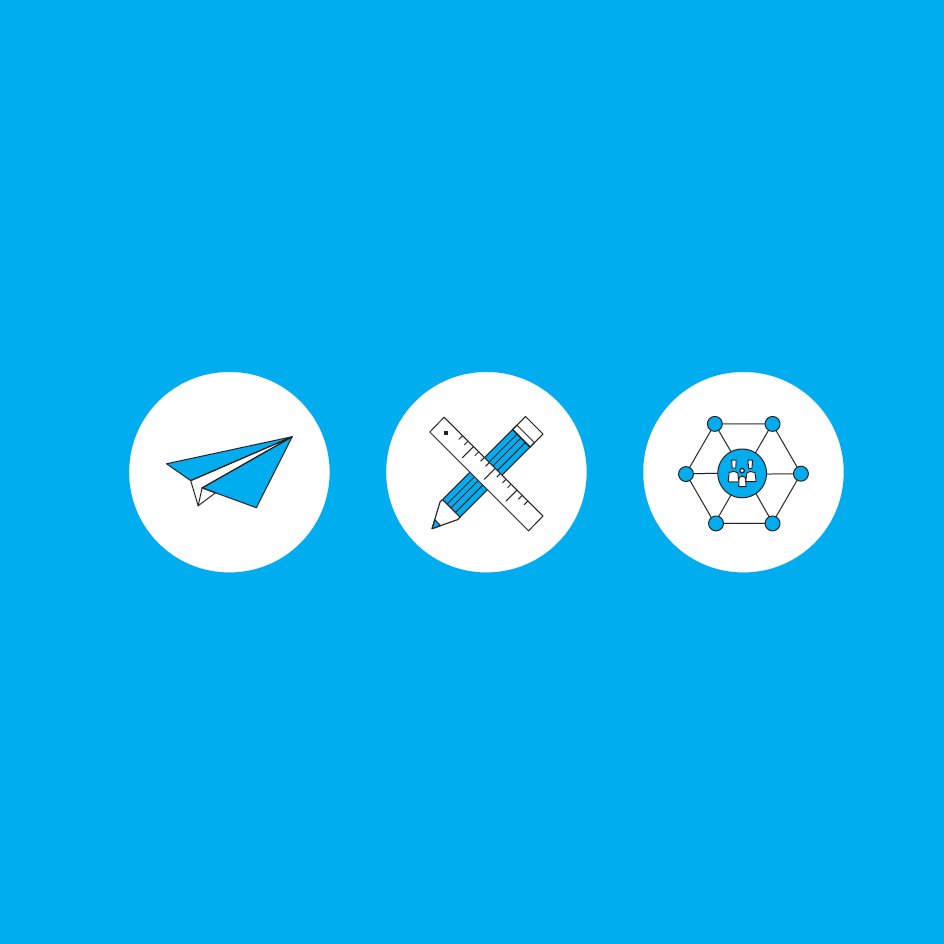Successful organizations don't win by spotting a single trend, no matter how big or game-changing it is. From ever-present behemoths such as General Electric to recently emerging giants such as Google, organizations succeed by recognizing and acting on multiple trends, in ways small and large, time and again. In short, they win because they build a trend-driven culture that can sense the direction of travel of customer expectations on an ongoing basis.
This section will show you how to kickstart and develop trend-based initiatives within your own organization, and how to leverage the power of external networks, too.
[6.1] Your Trend Department Get your colleagues to see around corners.
[6.2] Trend-Driven Ecosystems Tap into and harness external networks, too.
The most powerful cultural dimension of a trend-driven organization is its inclusiveness. Which tells you—though you've probably realized already—that the idea of a “Trend Department” is a misnomer: Trend watching shouldn't be limited to a select few within your business. To stay ahead of accelerating customer expectations, everyone in your organization should be a trend watcher: empathetic to people's needs, alert to moments of tension, and aware of the opportunities that will come from resolving them.
As this book has shown, there's no mystique to spotting trends (despite what umpteen “gurus” would have you believe). Most people don't think about trends because they don't know what they are looking for, not because they are unable to. Yet people are innately attuned to spotting the places where tension and opportunities are emerging. Unmet expectations lie beneath people's statements of frustration with the products they use on a daily basis, such as “I can't understand why . . .?” and “Why can't I . . .?”
Certainly, your customer service team will know what expectations you face as a business, as they will regularly hear what your customers expect to be able to do with your products!
This chapter will show how to strengthen the trend muscles in your organization by stimulating, unlocking, and harnessing the natural insights and impulses relating to customer expectations that your team have inside themselves.
INSPIRE
Give a trend presentation your audience can—t stop thinking about.
There are few better ways to kickstart your trend-driven innovation efforts than with a trend presentation. It sets the agenda, shows people what you mean by trends, and most importantly communicates the value placed on trend-driven innovation.
That being the case, you had better make sure that your next trend presentation is a good one. We've given hundreds of trend presentations over the past decade to audiences of all descriptions. Here's how we structure them.
WHEN AND WHY?
Trend presentations are a great addition to company town hall meetings, strategy and planning sessions, inspiration sessions and away days, project kickoffs, lunch and learn events, and more.
But ultimately, wherever and whenever you deliver it, your trend presentation should inspire your audience to take immediate action and empower them to spot upcoming future trends themselves.
People should leave the session with no doubt that trends aren't just “nice to know” or “interesting,” but contain actionable insights that they need to deploy, and soon. You should constantly challenge people to not just understand a trend, but think how they will apply it to their vision, business model, products, and marketing campaigns.
BUILDING THE PERFECT TREND PRESENTATION
The detailed step-by-step guide.
[1] OVERALL STRUCTURE
Of course, your presentation's structure will depend on its purpose, but there are a few we use again and again:
- The Future of X: 3-10 trends relevant to your industry, company, or market.
- 3-4 key mega-trends: with each big theme illustrated by an actionable, relevant, “smaller” emerging trend.
- Mega-trend deep dive: 3-4 trends that illustrate the future direction(s) of a single big idea.
[2] TREND SELECTION
As well as using the Consumer Trend Radar (see FOCUS), you can select relevant trends by working:
- Top-down: from the company mission statement, strategy, or project objective.
- Bottom-up: analyze a selection of recent innovations in a region or industry, and present the trends they relate to.
- Outside-in: proactively present trends other sectors or markets are experiencing, in order to provoke new perspectives.
Each trend you present should tell a compelling “story:”
- Open with an intriguing trend name to arouse curiosity. Remember FLAWSOME?
- What basic human need does the trend satisfy? What are the key drivers of change that make the trend relevant right now?
- Present supporting data and statistics to keep the left-brained members of the audience happy. Rapid movements or surprising data points work best.
- Show 3-6 innovations that illustrate the trend. Ask people to consider which new customer expectations these will create.
- Close with a “lightbulb moment.” Challenge people to think about how to adapt the examples and apply the trend for their customers.
[4] INNOVATION SELECTION
Which innovations to include? Again, the examples you show should tell a story:
- Open with a well-known (if slightly older) example to orientate the audience. The examples that follow will then show how the trend is evolving.
- Feature at least one example that saw unarguable success, such as crazily large sales or download numbers, to hit home the reality and impact of the trend.
- Use examples from a wide range of industries and markets, especially less obvious ones, to show people the breadth and consistent presence of the underlying customer expectation.
- Choose at least one example that the audience can experience for themselves. This could be via video or, if a digital innovation, prompt them to visit the site or download the app.
- Make sure to include an example from your audience's market/sector, to show that their peers are already acting on the trend.
- Feature a very novel or cutting-edge example, and use it to demonstrate where the trend—and customer expectation—is headed in the future.
![]() Head online to download a trend presentation template.
Head online to download a trend presentation template.
INFORM
Share the information that matters, in ways that inspire.
Giving a trend presentation is just one way to get people up to speed. Strongly customer-focused cultures don't just look at what is happening at the annual strategy session. They establish regular practices that help them continually sense the direction in which customer expectations are headed.
Indeed, simply by finding ways to make people more aware of game-changing innovations (and talking about the trends that underpin them), you'll inspire a culture where people start to think about trends and also where new opportunities to delight customers might lie.
There are endless ways to disseminate trend information around your team. Try creating an internal newsletter; create innovation screensavers to display on screens in your office; use social networks (see the case study on the PHD Source platform); put up physical posters. Or get physical, as in the KILN IdeaKeg case study opposite. Some of our clients even hang trend posters in the washroom!
KILN IDEAKEG
While virtual information is easy, quick, and cheap to share, encouraging people to get hands-on with trend-based innovations is a great way to ensure that the underlying insights really resonate and develop.
One of our favorite approaches to disseminating trend information is innovation advisory boutique KILN's IdeaKeg. Subscribers receive regular deliveries of a box containing seven “cultural artifacts,” each one illustrating an emerging trend. For example, objects have included seed “bombs” (that can be “planted” by throwing onto overlooked urban areas), tea in silk tea bags, Sugru putty that can be used to repair household objects, and a keyless padlock.
The boxes are designed to be used in a workshop setting. Objects are accompanied by a short summary of the underlying trend, while a facilitator's manual suggests questions to ask about each object. These help participants assess the objects and connect them to the challenges the business faces.
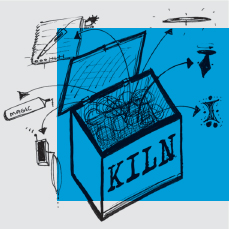
As Kate Hammer, KILN's cofounder and “commercial storyteller” says, “If you only tell people things, their minds draw a blank. When you create an environment where people can ask questions, creative thinking comes alive. Trends are a trigger to get people to ask better questions.”
COLLABORATION
Many minds make light work.
Successful trend-driven cultures do more than just share information; they share ideas about how to act on that information.
Just as our approach to trend watching encourages you to use innovations to tap into the collective intelligence of the business crowd, you should also ensure that your internal approach to trend analysis is equally diverse. Varied perspectives and inputs all increase the potential that you will make the novel connections that others are less likely to spot.
It's not always easy to encourage your team to share their insights on the innovations they see changing customer expectations and suggest ways your organization can respond. Most people are (rightly) focused on successful execution in their daily activities, not innovation. However, a culture of trend-driven collaboration will ultimately make your team's work lives more meaningful, enjoyable, and effective, as PHD's Source platform opposite shows.
PHD SOURCE
One of the challenges identified by global media and communications agency PHD was how to service and manage multinational client accounts while remaining agile and innovative.
Its solution was to create an internal online collaboration platform Source, as a place to conceive, design, and implement the media planning and buying strategies for its clients—and to not only involve staff assigned to those specific clients, but anyone in the entire company.

To encourage contributions, the agency introduced a gamification element. People receive “pings” for each action they take on the system, whether that be suggesting a new idea or helping to advance or optimize an existing one. Public leaderboards allow employees to see how their contributions rank relative to others (for the past day, week, month, and year; on a local and global level). These encourage usually friendly competition between the various participants and offices. There are annual awards for leading employees, although these focus on intrinsic peer recognition rather than tangible rewards such as cash prizes.
Incredibly, after three months of full deployment, 75 percent of PHD's 3,000 staff were using the platform, 1,500 doing so daily. The agency attributed the input from a diverse range of local offices as being critical in winning a $3 billion Unilever global account.
TRAINING
Create a crack team of trend-driven innovators.
Clearly your team is not going to become expert and active practitioners of trend-driven innovation overnight. It takes time and commitment to ensure that a culture takes root—and while presentations, workshops, away days, and other one-off activities help, they will not be enough in isolation.
Training programs are a powerful way of signaling to employees that trend-driven innovation is a priority for your organization. They're also a great staff retention tool if they deliver meaningful value and development to individual participants. Here are two innovative innovation (!) training programs worth learning from:
[1] THNK AND VODAFONE
The Vodafone Navigator program, launched in spring 2015, saw the telecoms giant partner with THNK School of Creative Leadership.
The custom program was designed around applying THNK's four innovation steps—sensing, visioning, prototyping, and scaling—to a real-life business issue facing Vodafone Netherlands. To that end, participants came together for four two-day modules over a six-month period to learn the process behind creative thinking.
Vodafone executives not only developed their innovation skills during the six-month program, they also solved a material business issue facing the company. As a result, the program's return on investment was quickly quantifiable in terms of business performance indicators.
[2] STRATEGYZER
Strategyzer is a business software and online training company set up by the team behind the Business Model Canvas, a popular one-page framework for analyzing business models that inspired our own Consumer Trend Canvas.
Tim Murphy, then chief product officer at MasterCard, engaged Strategyzer to deliver a training program that covered both the Business Model Canvas and Value Proposition Design (the follow-up framework).
One of the key objectives of the program was to enable colleagues to have better conversations around new ideas by giving them a set of tools, frameworks, and most importantly, what Strategyzer's cofounder Alexander Osterwalder calls “a shared language with which to discuss innovation and value creation” (from the perspective of both the business and customers).
The pilot started in late 2013, when training was initially delivered inperson to the executive team, and to team members globally via an online course that combined selfdirected learning and live remote video classroom sessions.
Following positive feedback from participants, the program had been taken by 10 percent of the global workforce and 50 percent of the product team after one year, with the tools now forming part of the formal process of innovation planning and assessment within MasterCard.
EMPOWER
Unleash staff to conceive innovations of their own.
Inspiration, training, and discussion mean nothing if you don't also establish a culture that both encourages and actively enables people to practice trend-driven innovation for themselves.
In a perfect world, organizations would be filled with people who spontaneously spot, suggest, design, and implement new innovations, and have the processes in place that allow them to do so. However, the very focus and structure that allow consistently successful execution at scale in most companies (especially larger ones) means that innovations spawned during “business as usual” moments will often be limited to sustaining or incremental ones at best.
Yet the relentless forces of creative destruction mean that every organization must also seek to generate truly novel or even disruptive innovations (however much of an overused business cliché that concept is now!).
One compelling way to do this is to initiate specific programs or competitions where staff can propose, pitch, and ultimately launch new innovations themselves. The organizational benefits are many: intense bursts of focus and excitement, a sense of recognition and engagement, and diverse perspectives on where new opportunities lie.
MONDELEZ FLY GARAGE
Snack brand Mondelez launched its Fly Garage innovation incubator initiative in Argentina in 2012. The now five-day program (each iteration has seen this reduced from its original three-week length) brings Mondelez employees together with agencies +Castro and Contagious, entrepreneurs, students, and external “agitators” to inspire innovative digital experiences.
The process contains three stages: creation, prototyping, implementation. Interestingly, participants are introduced purely as individuals; their positions are not disclosed to reduce preconceptions. Teams rotate every three hours during the idea generation phase so there are no owners of an idea. Maria Mujica, Mondelez's Latin American marketing director and Fly Garage lead, observes: “the garage is like a social smoothie, with trends an essential ingredient. To innovate, we expand our perspectives by going out of our category, and without trends we cannot start.”
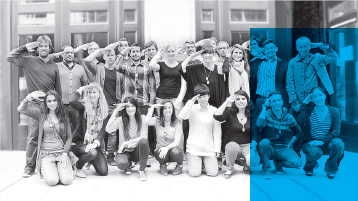
To ensure buy-in at the implementation stage, senior executives outline the overall strategic themes in advance; however, teams are encouraged to explore a broad spectrum of consumer culture and trends to generate project briefs.
After rapid prototyping, the brand looks to implement the ideas with the most potential. One such initiative was Beldent's Random Fest, a music festival with four stages centered around a lighthouse, which took place in 2013. Each artist would play three tracks, before the lighthouse would randomly shine its light to announce which band would play next. The show was attended by 10,000 fans and streamed to a further 250,000 people online.
ADOBE KICKBOX
Adobe VP of Creativity Mark Randall heard employees cite the same obstacles preventing them from being innovative: no time alongside their day job, difficulty in securing resources, and lack of clarity about how to launch ideas.
As a result, the company launched its Kickbox initiative to address these head-on. Any employee can request a Kickbox and managers cannot veto a request. They receive a physical red box containing an innovation “toolkit:” a chocolate bar, a $10 Starbucks card, Post-It notes, a notebook, a step-by-step innovation manual and, most importantly, a prepaid credit card with $1,000.
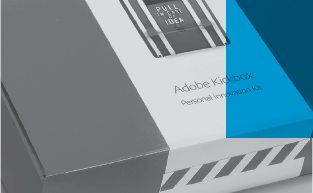
Participants are challenged to work through six stages (Inception, Ideate, Improve, Investigate, Iterate, Infiltrate). During the Ideation stage, participants are instructed to scan trend websites as one of the “external sources [that] are essential to spark new observations and questions about the world.”
If participants complete the final stage and successfully present their tested and validated idea to executives, they receive a follow-up blue box with additional resources and guidance to continue its development.
Participants reported that the prepaid credit card (No receipts required! No approvals!) suddenly transformed the company's talk of innovation from a management cliché into something that employees were being trusted—expected, even—to deliver.
In January 2015, Adobe released the program and supporting materials to the public, enabling anyone to download and access the materials for free.
AVIVA CUSTOMER CUP
Multinational insurance company Aviva launched its Customer Cup competition in 2008; since then over 1,300 internal teams have participated.
The competition encourages any employee to submit an idea via the company's idea management system. Richard Wilkinson, Customer Cup innovation manager, says: “Trends are stimuli for idea generation. They offer context and insight that helps people focus upon developments which are desirable for our customers and business.” Colleagues can comment and vote on submissions, which encourages people to build support among their peers.

Local CEOs select promising ideas, and around 100 are advanced to the semifinals. At this stage, proposers have to recruit five additional people to form a small team, develop the idea further, and submit a business case. A judging panel then selects 10 entries to progress to the three-day Grand Final, held at a prestigious venue where teams present their final pitch to members of Aviva's group executive.
Andrew Brem, Aviva's chief digital officer, estimates that the competition has generated nearly £75 million in net benefits to the company to date.
LABS
Separate, accommodate, and experiment.
Another method of encouraging and supporting trend-driven innovation within larger organizations is to create separate, specific units that have innovation as their ongoing focus and are explicitly positioned as labs, skunkworks, or similar. Being separated from the core—and granted a mission of creative destruction—enables these units to experiment with, execute, and deploy new ideas at a faster pace than the corporate structure allows but at that which customers and the market demand.
Labs also make sense for customers, whose expectations toward national and multinational corporations are stratospheric and unremitting; indeed, if a major retailer releases a new service and it breaks or flounders, the backlash will be public and immediate. Setting up a lab unit allows organizations to deliver new products and services to early adopters in a (very slightly) less pressured environment.
Labs are not a quick win, though. You need strong executive commitment, and half-baked attempts to inject “startup thinking” and agility into a lumbering parent organization will fail.
However, when done right, labs can help attract and retain inventive, ambitious people who wouldn't tolerate working in a more confined corporate setting, as well as helping you produce the meaningful, trend-driven innovations that offer new opportunities to delight customers.
[CASE STUDY 1]
@WALMARTLABS: SAVINGS CATCHER
Founded in 2011 after the world's largest retailer acquired online search and discovery platform Kosmix, @WalmartLabs employs over 3,500 people (not your average lab!).
One project is Savings Catcher, released in March 2014. Shoppers scan their Walmart receipts with the smartphone app, which then checks if local competitors offer any of the purchased products for less. If the app finds lower prices, the difference is automatically refunded within 72 hours onto a Walmart gift card. The retailer reported in September 2014 that it had returned $2 million to customers via the app.
[CASE STUDY 2]
WESTFIELD: DINE ON TIME
Mall operator Westfield established its San Francisco-based lab in 2012. The 70-person division is headed by Kevin McKenzie, the company's global chief digital officer, and targets innovation at the convergence of digital and real-world retail.
One of the projects piloted by the lab is a food-ordering app, Dine on Time. Users can preorder food from restaurants in the Westfield San Francisco Center to avoid waiting in line, or arrange to have meals delivered to their home or office. Users can also use the app to order off-menu special dishes.
> NEXT
Having read this chapter, you now:
- [1] Can deliver a killer trend presentation and inspire your team;
- [2] Know the main activities a trend department should be focused on; and
- [3] Have seen some real-world examples of how other organizations are conducting trend-focused activities.
Next, learn how to extend these outside the boundaries of your organization in order to tap into the wider ecosystem of ideas, inspiration, and opportunities.
The accelerating pace of change means that even the most attuned of organizations can't hope to keep up by relying purely on its own resources. As Sun Microsystems cofounder Bill Joy observed: “It's better to create an ecology that gets all the world's smartest people toiling in your garden for your goals. If you rely solely on your own employees, you'll never solve all your customers' needs.”
And just as organizations with an effective internal trend-driven culture follow certain similar patterns of activity, we have found that organizations with strong external cultures consistently participate in and support certain activities, too.
This chapter analyzes the most powerful methods that companies like Unilever, GE, Barclays, Telefónica, and others use to connect, challenge, and work with outside actors, and shows how you can use these strategies to stay ahead of customer expectations.
At first glance, the activities in this chapter appear focused on larger companies. However, they are just as relevant to smaller companies, too. Indeed, large companies often seek to engage with smaller startups in their attempts to foster trend-driven innovation.
Wherever you sit, this chapter should give you ideas as to how to connect with those on the “other side” and unlock growth.
NETWORK
Building connections beyond your walls.
The last chapter looked at how sharing information among the members of your team is critical to obtaining a better understanding of trends. In the same way, sharing information and learning from those who are not part of your organization allows you to benefit from others' experiences and insights.
Indeed, the idea of a porous network of external collaborators is central to how we operate at TrendWatching. Our free trend publications give us a platform from which we recruit trend spotters to TW:IN (TrendWatching's Insight Network). We rely on this network of passionate trend enthusiasts to help inform us about new innovations and the direction of customer expectation. Once we spot a potential new or evolving trend, we turn to the network with questions: are similar innovations happening in their markets and industries? Does it have broad appeal?
Digital technologies offer organizations an incredible ability to build and engage with communities on a global scale at low cost. These can be organized around a theme (such as consumer trends) or even around a specific trend, as Crowd Companies (opposite) is.
Whichever is the case, being part of a vibrant network enables you to benefit from a diversity of opinion, experience, and insight that your internal resources can't match.
CROWD COMPANIES
Crowd Companies is a network with a mission “to bring Empowered People & Resilient Brands together to collaborate for Shared Value.” It was founded in late 2013 by ex-Forrester social media analyst Jeremiah Owyang, to reflect his view that the Collaborative Economy represented a more meaningful and long-lasting trend than social media. The network connects large companies with the disruptive startups active in shaping the Collaborative Economy and has three main activities:
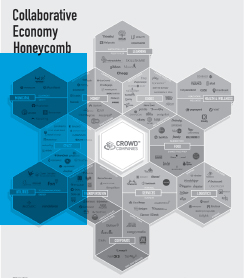
[1] Brand council: to enable corporate members (typically chief innovation officers) to share experiences and challenges with their peers at private physical events and via an online platform.
[2] Educational services: to give members the chance to learn from startup practitioners and access research data on the Collaborative Economy.
[3] Partnering: to bring both sides of the network (corporate and startup) together to explore new business opportunities.
Founder corporate members included Barclaycard, Ford, GE, Nestle, and Walmart, and membership doubled in the first year to 48 companies across a range of industries. Collaborative Economy innovator members include crowdfunding platform IndieGogo, makerspace TechShop, ridesharing platform Lyft, and job marketplace Elance-oDesk.
CROWD-POWERED INNOVATION
The best minds don—t work for you.
The notion that no matter how large or compelling your organization is, most of the smartest people will still be working for someone else is what underpins “open innovation,” a term coined by Haas Business School professor Henry Chesbrough in 2003.
Open innovation encompasses many concepts and approaches, but the central idea is that companies need to seek external inputs when innovating in order to source new ideas and to deliver novel solutions.
Certainly, the past decade has seen profound changes in both companies' mind-sets and abilities in this area, and a 2014 Haas Business School study showed that 78 percent of large companies were now engaged in some form of open innovation.
Typical open innovation approaches include:
[a] Competitions: contests can engage diverse crowds to solve problems, often with fresh perspectives and in a fraction of the time and cost of internal efforts.
[b] Communities: the open source software movement is a great example of where an “unmanaged” crowd community can outperform directed, top-down efforts.
[c] Platforms: technological APIs that enable data to be integrated into third-party services, while managed platforms such as mobile app stores allow third parties to extend or build on core functionality.
EYEKA AND UNILEVER
eYeka is a global crowdsourcing platform founded in France in 2006 that connects brands and creatives through online challenges.
The platform now has over 300,000 registered creatives from over 150 countries. They have submitted over 85,000 ideas in response to the 750 brand challenges posted, in return for over €5 million in prize money. Challenges typically target product development and design, brand positioning, and specific campaign ideas for consumer product brands.

A powerful example of an open creative process can be shown by Unilever's “Dirt Is Good” 2012 challenge. The global campaign was designed to reassure mothers that allowing their children to play in less than totally sanitized environments is beneficial to their personal development.
The monthlong contest saw 88 ideas submitted from 29 countries, with the most coming from France, China, Indonesia, Russia, and India. However, the winning idea was a 3D animation submitted by a German dancer, which was then adapted into a TV commercial for Unilever's Breeze Active Bleach in the Philippines. The global brain indeed!
Other brands that have used the platform include dental care brand Oral B (which sourced ideas for a connected brushing app), Citroën (which sourced designs for personalization options for their DS3 model), and Carrefour (which sourced concepts for its campaign celebrating 20 years since it entered the Turkish market).
HOUSE
Share physical space to get exposure to new, on-trend ideas.
Despite the digitalization of so much of our daily lives and the ability the online world offers organizations to tap into external networks as we've seen, the power of physical proximity and interaction remains strong.
One thing that larger, incumbent organizations frequently have is a surplus of physical space, or at the very least, the resources to provide space. Sharing space with smaller startups, creative communities, and even individuals can lead to a sharing of ideas and development of trend-driven initiatives that may otherwise never be considered.
On the demand side, the changes in working habits and resources required to start a business mean that entrepreneurs and small teams can come together quickly to test an idea. Indeed, since the term was first used by freelance product engineer Brad Neuberg in San Francisco in 2005, coworking spaces have exploded in popularity, roughly doubling every year to an estimated 2,150 spaces globally at the end of 2012. Many of these are now provided or sponsored by corporates, with the Hatch example opposite showing how these spaces can even be created from underutilized corporate assets.
However, while coworking spaces and coffee shops are suitable for those who simply need a laptop to advance their ideas, innovators who require more heavy duty hardware will be willing audiences for organizations who can offer them physical space and exposure to such equipment—as in the case of GE's Garage initiative, opposite.
[CASE STUDY 1]
BARCLAYS: HATCH
As part of its efforts to support entrepreneurs and small businesses, financial services giant Barclays has launched a number of space-based initiatives. In addition to opening traditional coworking spaces in London and Manchester, the bank partnered with nonprofit 3Space in late 2014 to open “Hatch,” a coworking space focused on social enterprises and community groups, in a vacant ex-Barclays bank branch in Oxford. Qualifying users can use the coworking space for free, while the unit also hosts mentoring sessions and a makerspace with sewing machines, workshop tools, and access to a 3D printer.
[CASE STUDY 2]
GE: GARAGE
Over the past decade conglomerate GE has made building a strong externally focused innovation culture a strategic priority. Its Garage project started in early 2012 in Austin, Texas, with an objective to stimulate interest in domestic manufacturing and invention. Garages are GE-funded makerspaces where people can come to learn about and use advanced manufacturing hardware, including laser cutters, 3D printers, injection molders, and Arduino kits. In 2014, GE launched a global tour, establishing pop-up Garage spaces in Lagos and Algiers, and in 2015 visited Brussels and Berlin.
VENTURING AND ACCELERATION
If you can—t beat them, fund and scale them!
The final alternative method of building a strong external trend-driven culture, for larger incumbent companies especially, is to invest directly in the very startups that threaten to disrupt them. Indeed, the growing awareness of the threat from new startups has driven a doubling of corporate venturing units in five years to 1,100.
These larger companies are well aware that they might struggle to meet emerging customer expectations as quickly as newer organizations. However, the hope is that they can invest in, work with, and even help scale those companies that otherwise might threaten them.
Especially in the nondigital world, where production and distribution at scale pose serious operational challenges, partnering in some form or other can be very attractive for smaller organizations. Even startups with a digital product can often be seduced by the resources and large existing customer bases of incumbents, as Telefónica's Wayra program (opposite) shows.
However, as we saw in the introduction, venturing and acceleration is no silver bullet, not when smaller and newer organizations enjoy many advantages, both in terms of their agility and responsiveness, but also because as CLEAN SLATE BRANDS, they are often perceived by customers to be more ethical and trustworthy.
The reality is that, as always, finding the right partner is critical—for both sides.
TELEFONICA WAYRA
Facebook's $19 billion purchase of WhatsApp, the messaging service that at the time had only 55 employees yet served over 450 million monthly users, symbolizes the severe threat of disruption facing incumbent telecommunication providers.
In response, multinational provider Telefónica has established a wide-ranging open innovation program. It includes Wayra, a startup accelerator program that launched in Latin America and Spain in 2011. By early 2015, the program had expanded to 14 “Wayra Academies” in 12 countries, including Argentina, Brazil, Mexico, Colombia, Germany, and the U.K.
Successful startups sell between 7 and 10 percent equity to Telefónica in return for up to $50,000 in cash funding and the same amount in services. Startups get housed for six months in a physical Wayra coworking space; they gain access to Telefónica's technological expertise and to executives to whom they can pitch their products and services. After six months, the startups have to move out of the physical spaces and seek additional funding.
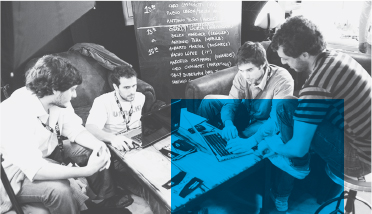
By 2015, the program had received nearly 30,000 applications, with 438 being accepted. Telefónica reported that 61 percent had gone on to receive an additional $99 million in funding from third-party investors, while 80 companies also piloted or trialed projects with the core Telefónica business.
> NEXT
Having read this chapter, you now:
- [1] Understand the opportunities that reaching beyond the limits of your organization can unlock; and
- [2] Have witnessed a number of examples of practical initiatives you can pursue.
A culture of trend-driven innovation is one that allows you to build and leverage both internal and external resources. Critically, this turns trend-driven innovation from a one-off activity into an ongoing process, and one that will keep you ahead of customers' accelerating expectations.
This brings us almost to the end of our guide to trend-driven innovation. Turn over for a final wrap-up and summary of the end-to-end journey!
OVER TO YOU
The examples featured in this book are truly just a tiny snapshot of the astonishing creativity and unprecedented choice that characterize the world we now live in. There are over 1.4 million apps in the Apple App Store alone, and 2014 saw over 1,000 apps added every day. More than 300 hours of video are uploaded to YouTube every minute. Amazon.com added more than 20 million items to the site in the first nine months of 2014, taking its product selection to over 250 million items.
While the competition for customers' attention is extreme, the opportunities for those that win customers' hearts and minds—and wallets—are just as mind-boggling. Facebook's recent acquisitions show how quickly value can be created: paying $1 billion for Instagram 18 months after it launched, $2 billion for Oculus Rift less than two years after its successful crowdfunding campaign, and $20 billion for five-year-old WhatsApp. Xiaomi, now the world's third-largest smartphone maker after Samsung and Apple, is valued at $46 billion. It released its first phone in 2011. After five years of operations, Uber is facilitating over 1 million rides a day in more than 300 cities worldwide. And it's not just hot mobile and technology startups that are growing exponentially; consumer and retail brands applying to the equity crowdfunding platform CircleUp have an average annual growth rate of 93 percent.
You picked up this book because you want to build things that people love. We hope that the trend-driven innovation methodology both inspires and empowers you. Yes, much hard work lies ahead. Spotting trends, figuring out which ones offer the most compelling opportunities, designing and launching brilliant new concepts—these are not easy tasks. However, standing still is not an option.
Following the trend-driven innovation playbook will ensure that your next customer-centered initiative is successful, but more importantly it will help you build an organization that sees success again and again. And alongside the professional and financial rewards, practicing trend-driven innovation—making things that matter to people—is intensely personally rewarding. Catering to people's most fundamental human needs and desires, making their lives better, creating a better future for all of us—who doesn't want to be a part of that?
So, what next? This book is just the start of your trend journey. Analyze and learn from the 40 trends and over 100 featured case studies. Use the tools and strategies to launch winning innovations of your own. Develop a mind-set and a culture that anticipates what customers will want next. Bring it all together and create the next big trend.
We will be watching!
BRING IT ALL TOGETHER AND CREATE THE NEXT BIG TREND.



